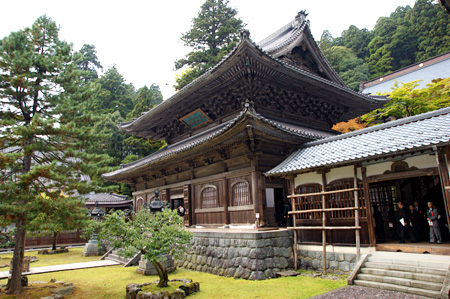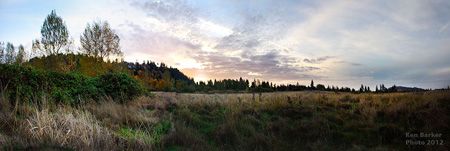The Pillar
An Open Letter from Sallie Jiko Tisdale
“Most people today mistakenly think that constructing buddha-images and building stupas helps the buddha-dharma flourish,” wrote Dogen in September of 1235. “Even though we might erect huge temples adorned with polished jewels and gold, we cannot attain the Way by these works. To learn even a single phrase of the dharma-gate or to practice zazen if only for a single period, while living in a thatched hut or under a tree, shows the true flourishing of the buddha-dharma.” Dogen had that year established his first Japanese temple, Kosho-ji, at a small temple near Kyoto. He began to remodel and expand, a costly venture. “At present I am appealing for donations and working as much as possible to construct a sodo. Still, I do not think that this necessarily contributes to the flourishing of the buddha-dharma…. I am working on this for the sake of founding a dojo for zazen practice for people studying the Way in this age.”
 Dogen worked mightily to establish Kosho-ji, and with more effort still to build Eihei-ji several years later. But he made it clear what he was really building. “I will have no regrets even though what I have wished for and begun might not be realized. I do not mind if but one single pillar is erected, as long as people in later generations think that someone had the aspiration to carry out such a project.”
Dogen worked mightily to establish Kosho-ji, and with more effort still to build Eihei-ji several years later. But he made it clear what he was really building. “I will have no regrets even though what I have wished for and begun might not be realized. I do not mind if but one single pillar is erected, as long as people in later generations think that someone had the aspiration to carry out such a project.”
We are also working in this way, to construct a sodo and much more. This enormous enterprise will be the biggest work not only in the history of Dharma Rain Zen Center, but in the lives of many of its members. This is a big dream, with great potential and real risk; it will require everything we have to give of time, money and labor.
Several months ago, Kyogen and Gyokuko began meeting with the sangha in small groups. These “Abbot teas” were a place for members to come forward in an intimate setting and talk about how the land purchase and temple project felt, to ask questions and express concerns.
It is abundantly clear how much people love this community. Again and again, people spoke of gratitude for Dharma Rain as a welcoming place, inclusive and respectful of the many forms of Zen life. People cherish our ability to bring intimacy into serious religious practice, making room for large and small groups, shared meals, flexible attendance, and individual paths without guilt or pressure. Many noted the importance of their personal connections and the shared values they found in other members. Our sangha is seen as a healthy, vibrant community where lay and monastic people, the young and the old, teachers and beginners, interact easily.
Wow. These are qualities that come only from the sincere efforts of many people. What we cherish at Dharma Rain is rare in the anonymity of modern life, and for that rarity, more precious still.
No venture of such size can be undertaken without anxiety. The potential loss of any of these rich qualities — of our particular, inimitable flavor of practice — is frightening. Members who care about the intimacy fear that the community will get too big and we will lose our close connection. Those who appreciate the flexibility for lay practice fear that the sangha will become insular or exclusive and shut out people with other responsibilities. Especially, we are worried that the financial risk is too great, that the entire project simply could fail. We fear the loss of something that can’t be replaced — the loss of the physical place in which we meet, the loss of our place in the community. Our spiritual family — that’s a lot to lose.
“Even though we might erect huge temples adorned with polished jewels and gold, we cannot attain the Way by these works.” Practice teaches us that the Way isn’t found in buildings. The Way is not found outside ourselves — and yet we build. Now is our turn to take a long view. Why do people plant trees that won’t be full until their grandchildren are grown? Why does an architect set the cornerstone for a cathedral that can’t be finished in two lifetimes?
Our practice teaches us to be more flexible, more willing, more accepting of change, but even desired change is hard. The stress can leave us groundless at times, uncertain of the next step. There are losses ahead. I remember when we bought the building that is now our zendo. Since then, it seems that everything has changed — the paint, the carpeting, the windows, lights, even the walls. We’re leaving this building behind. The temple will move into temporary quarters and then toward a physical campus that will be quite different from the only one most members have known. The buildings with which we are so familiar will be gone — but they already were. Perhaps such an enormous shift, and the work, cost, and effort involved, doesn’t seem worth it. But buildings are always disappearing, as we are always arising and disappearing. Change inevitably brings loss, but, in Nagarjuna’s phrase, “change makes all things possible.” Our practice today must partake of both these truths.
In fact, we are throwing everything into this project for exactly the reasons I listed already: we cherish the community we have built. None of this is change for change’s sake, or lightly taken on; this is our chance to give our community the room it needs to breathe, the spaciousness everything requires to be whole. That includes physical space, enough to finally integrate a community that is bigger and more diverse than most members realize, because we’ve been forced to separate for lack of room. This also includes psychic space — enough to integrate the moments of a structured day of practice with the demands of family life and career in a way that has room for everyone.
Most people come to Buddhist practice as a medicine for the illness of suffering. We come because we are in pain, and we stay because we find relief from that pain. We don’t come to save others or to build a temple or run a church. In fact, a number of people leave after being members for a year or so, and others leave after about five years. I have never felt too concerned about this, because I think it often represents success — a discovery of that medicine and their development of the ability to keep practicing in ordinary daily life.
Such a discovery works the other way as well, leading people to a great appreciation for formal practice and sangha relationships. In time, we want to support the Dharma for others. Lots of us do stay — for five years, ten years, twenty years. We stay for the rest of our lives.
During the teas, people talked about the hope that, even as our physical campus changes, that the feeling of practicing at Dharma Rain will not. “Please continue to have diverse classes,” was one comment. “I hope you keep core practices,” was another. But who is asking? And who is being asked? I don’t make a community for you; you don’t make one for me. And in fact, we do this work of community for everyone else, more than for ourselves; these other beings need us to participate. We are a community only when we both enter. There is no one to ask — no one who is asking.
Intimacy feels very quiet, but it is an active state that arises out of the way we meet and touch and see each other day by day. For all that there will be disruption and confusion at times over the next years, the effort could bring us that much closer to each other. We will be changed by the effort. Please continue, for all of us. How will you offer diversity and opportunity? How will you keep core practices alive? How will you help this project succeed?
I’ve been here a long time, and I’ve witnessed, and been part of, many dramatic changes in the character and shape of Dharma Rain. I can say from experience that when we feel anxious, when we feel afraid of what might come, that is the time to lean forward. To lean in, and not hold back. If we throw ourselves into this great venture together — for the sake of others, now and in the future — then our hearts will be engaged no matter what happens; we will stride forward on the path no matter what happens.
The years ahead will be scary, tedious, exciting, and more. How do we practice with the knowledge that our great effort could fail? With the aspiration to succeed. We will need all we have: practicality and vision, patience and perseverance. We need everyone that we have. We will need to be openhanded even in the midst of great labor. I believe we can approach the next years realistically, facing discomfort and the unknown, with curiosity and hope.
“I will have no regrets even though what I have wished for and begun might not be realized,” wrote Dogen, almost 800 years ago. “I do not mind if but one single pillar is erected, as long as people in later generations think that someone had the aspiration to carry out such a project.” He was doing this, he wrote, because he saw too few people studying the Way and he himself had a “leisurely” life. He saw a need, and Kosho-ji still stands. Eihei-ji thrives. We say that teachers become teachers when students arise; ancestors become ancestors when descendants arise. And buildings become zendos when practitioners enter them. I think this is what holds up Dogen’s pillar, even if it stands alone.
I said that this was the biggest project we’ve undertaken, but that is only in practical terms. The biggest effort is the one in which we engage every day — to take the seat, face a wall and face ourselves. To see each other and be seen. To carry the Precepts out into the world in our daily lives. This has nothing to do with buildings. The buildings toward which we now turn, one day at a time, are simply tools in that endeavor. The act of trying is what counts the most. If such an ancestor as Dogen saw his life as one of leisure, what can we do but throw ourselves into the work ahead?



